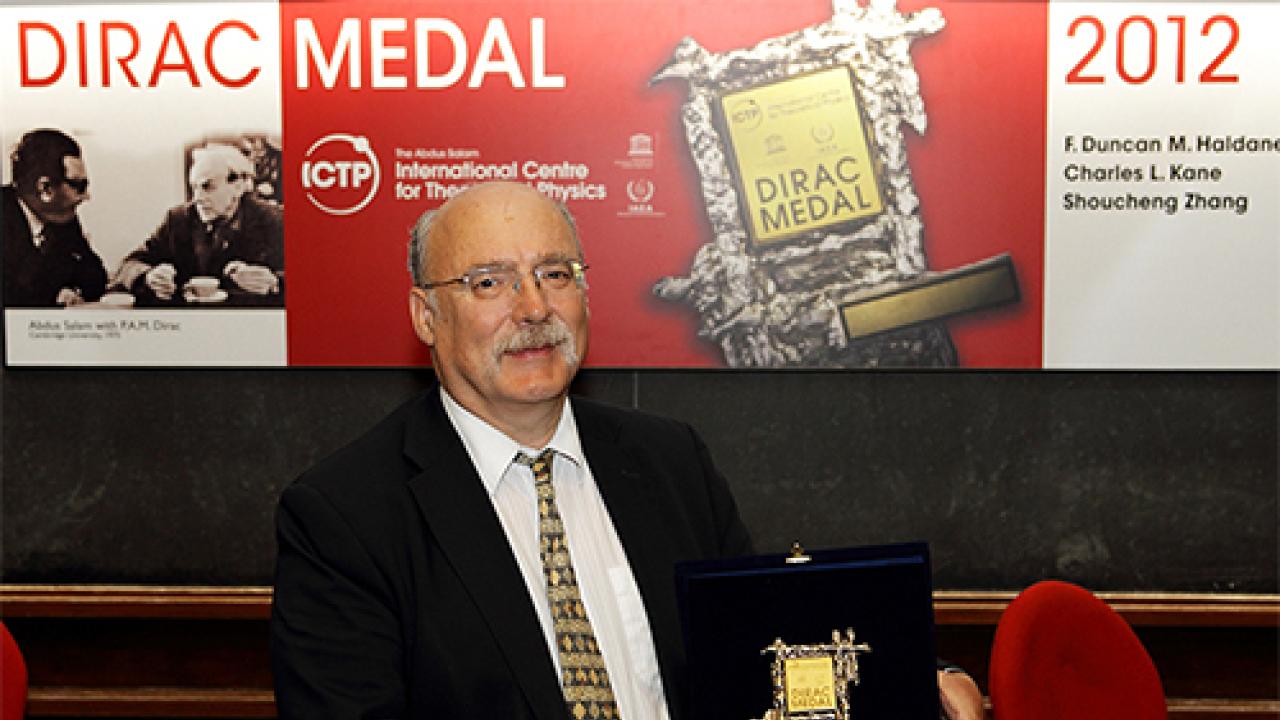
Physicist Duncan Haldane, a frequent visitor to ICTP and recipient of its 2012 Dirac Medal, is co-winner of the 2016 Nobel Prize in Physics. Haldane, of Princeton University, shares the prize with David Thouless and Michael Kosterlitz “for theoretical discoveries of topological phase transitions and topological phases of matter”.
The pioneering work by this year’s physics Laureates has important implications for the discovery of new and exotic phases of matter that could have future applications in both materials science and electronics, including superconductors and quantum computers.
Haldane’s Nobel-winning research earned him earlier accolades as a recipient of ICTP’s 2012 Dirac Medal, which cited his work in furthering the understanding of the strange conductive properties of topological insulators. These are substances that can act as an insulator with the bulk of its material and conduct electricity along its surface, as if the edge itself were a lower-dimensional metal attached to the material. This odd conductive property was first discovered in a strong magnetic field in what's called the Quantum Hall Effect. At certain values, the magnetic field blocks the motion of electrons in bulk, making the system insulating. But electrons slide freely along the edges and surfaces, carrying electrical currents from one side to the other. In 1980, scientists considered the Quantum Hall Effect bizarre because electrons in two dimensions are normally "localized" -- completely unable to conduct.
Related effects were later observed in some more ordinary, three-dimensional materials as well. Scientists were surprised that a perfect response should arise despite rampant imperfections in the material. The key was that edge states had to exist for "topological" reasons, which protected them against the material's imperfections. Haldane set the foundations for that concept with his 1980s research on electron and spin systems in one-dimension, discovering the first example of a new type of topological material, which is now a lively field of research in condensed matter physics.
Independently and parallel to that, the early work of the two other Nobel winners, Kosterlitz and particularly Thouless--a great master for a generation of scientists--conspired to establish the field of topological systems, powerfully revived in the first decade of this century. Many researchers are currently working to better understand topological insulators, as well as explore their potential applications. Many think topological insulators could play a part in advancing information and communications technology. "When developing nanosize electronics and pursuing coveted goals such as quantum computers, the availability of conducting channels that do not spoil and will work no matter what is something that seems quite important. Beyond that, the possibility that properties of matter should depend on seemingly arcane topological quirks, once the mere dream of few, is now a positively exciting reality," said ICTP condensed matter physicist Erio Tosatti.
Related links:
- The Nobel Prize in Physics 2016
- ICTP Dirac Medal
- Topology and geometry in condensed matter: Duncan Haldane’s session at ICTP’s 50th Anniversary













